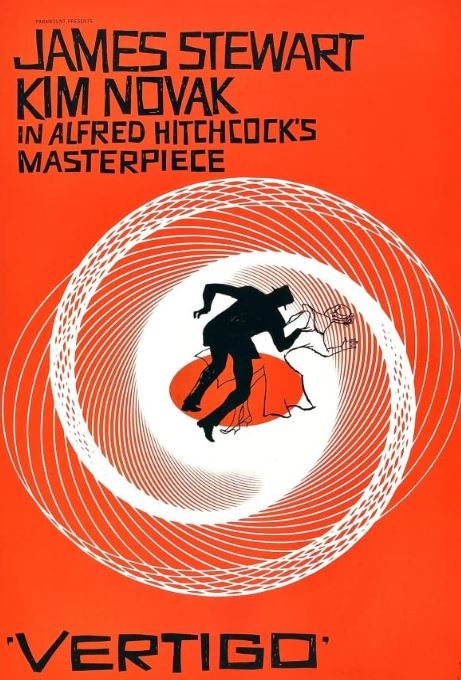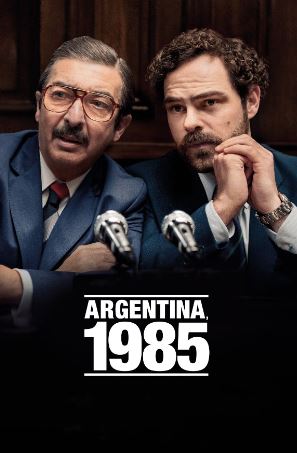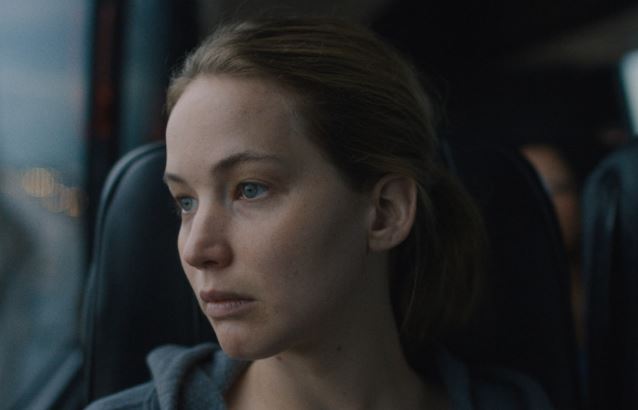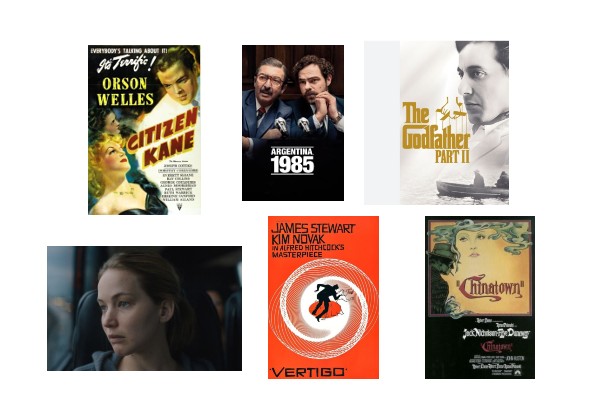According to the NY Times reports of polls taken by the British film magazine, Sight and Sound, Alfred Hitchcock’s Vertigo supplanted Citizen Kane as the greatest movie of all time.


That was in 2012. Ten years later, in 2022, Vertigo came in second and, unbelievably, Citizen Kane was relegated to third place. A 1975 French feminist film, Jeanne Dielman, 23, Quai du Commerce, 1080 Bruxelles was named number one.
I have an ex-wife who used to say, “Barney’s not a feminist, but he ‘gets it’.” I will cop to that… but I cannot say I “get” the thing about the French film directed by Chantal Akerman. I mean, to begin with, if it is worthy of supplanting Citizen Kane, what took it nearly half a century to catch on?
The question must be raised… are the Brits putting us on? I will concede they are not alone regarding the Hitchcock flick. One of my most discerning friends keeps hyping me about Vertigo despite my persistent disinterest. It took Sight and Sound …by way of the New York Times… to capture my attention.
I laid out the $3.99 plus tax to Amazon Prime and streamed the Master of Suspense’s 1958 feature film, seeing it for the first time since my undergraduate days at USC. I did not love it then and, believe me, it has not aged well. All except for Kim Novak. She is still as gloriously beautiful on screen in this psychological thriller as you may remember. Also starring is James Stewart (not his finest moment by a long shot) along with Barbara Bel Geddes, whose character in this threesome is the one who really needs her head examined.
That Vertigo should top anyone’s list … or even be catalogued as a top film in any such compilation of any reasonable length… is comparable to the French film industry’s fascination with the so-called auteur American filmmaker, Jerry Lewis (of one-time Martin & Lewis fame). In other words: a perverse joke.
Vertigo is not even the best film ever made by Hitchcock. Psycho, The 39 Steps, and North by Northwest come quickly to mind as movies that are much more innovative and entertaining than this overcooked “masterpiece” which has the contributors to the Sight and Sound poll as the ones who have really lost their balance.
Prior to the Sight and Sound poll, I had never seen Jeanne Dielman, 23, Quai du Commerce, 1080 Bruxelles. A quick bit of Google search corrected that, taking me to HBO MAX where I learned I was in for a nearly three-and-one-half-hour “experience.” To set the mood, and to properly prepare, I returned to Google to find if Chantal Akerman’s film had received an Oscar nomination in 1975 and what competition her motion picture faced that year. Turns out there was no such nomination; small wonder, given the nominees that year included Chinatown, Godfather Part II, and The Conversation.
Now to the movie: you can Google all the rave reviews by major cinephiles and top New York critics if you want, but seeing the motion picture for yourself is revelatory. It brings new meaning to the term “straight forward.” In every scene the camera is set in one position and the “action” (such as it is) takes place within the composition of that one shot. No camera moves, no editing to show reaction shots, no closeups, and the camera set so low that occasionally the tops of the actor’s heads are out of frame. (Another Google search revealed that director Akerman was barely five feet tall, most likely explaining the below normal camera position.)
For over 200 minutes the film shows in considerable detail the main character washing dishes, making beds, bathing, preparing dinners, and doing some shopping. Day… after day… after day and taking plenty of time to do each of these chores. It is a bore… and deliberately so. It is the point of the movie and why it stands as such a provocative feminist screed. The film is powerful in many ways, but what it is not, is a good movie. That the film is on anyone’s best 100 list, let alone at the top of the heap, is ludicrous.
Let me move on to something more current and clean up some cinematic loose ends in the process. My Academy screener of Argentina, 1985 was damaged and so I watched a dubbed version of the film by Santiago Mitre on Amazon Prime. Too bad.

The dubbing of movies from one language to another has been going on since the advent of sound, nearly a century ago. Then World War I changed the landscape of cinema in more ways than one.
In those days of the early 20th century, Germany and France were the centers of the world of cinema; the French language… the language of diplomacy… was pretty much acknowledged as the primary international language as well.
The “language” of war was explosives. To make those, one needed nitrate… a primary component necessary to the manufacture of motion picture raw stock.
The priorities of the capitals of Europe switched from art and science to the very serious business of war-making. In the process, filmmaking was essentially left to the isolationist Americans. Almost overnight, Hollywood became the film capital of the world. The dominance of the English language for motion pictures was the result; the world of diplomacy, commerce, and just about everything else, quickly followed.
From Tokyo to Berlin to Rome to Paris to Beijing, throughout Latin America and more, the art of dubbing motion pictures (mostly from English to [pick ‘em] Japanese, German, Italian, French, Chinese, Hindi, and Spanish) rose to the level of high art.
There are voice actors all over Europe who have celebrity status as the voices of Hollywood’s biggest stars. Often a film’s release abroad will be delayed until the local actor associated with the voice of Tom Cruise, Scarlett Johansson, Robert Downey, Jr., or Samuel L. Jackson can be made available to dub in the proper sound performance.
There is no such equivalency in the USA. Dubbing of voices into English is done on the cheap in almost any American town with a microphone and a tape recorder. The quality of voiceover acting has little tradition and therefore is one of minimal accomplishment. You view a dubbed foreign film at the movie’s (if not your own) peril.
That was certainly the case with Argentina, 1985… and I proved it to myself (once again) by re-screening a good portion of the over two-hour long film once my Academy screener system was finally up and running.
That Mitre’s political saga still basically worked in the dubbed version is a major tribute to both him and his film. That said, I would be remiss not to point out that an apology is owed to the original cast whose performances were all but butchered in the English language incarnation of the film.
See this based-on-fact political courtroom drama in its original form if you can. Trust me, the subtitles are accurate enough to understand what it is you are seeing… and they do not destroy the performances in the process.
I am reminded that this also applies to Babylon Berlin, the German television series which completed its fourth season last fall. I loved the first season which Netflix initially released in the original language. For presumed commercial reasons, the decision was made to switch over to the dubbed (English language) version.
They lost me as a viewer. I now wait in hope for the series to make a comeback in German with subtitles.

Meanwhile, Causeway stars Jennifer Lawrence, the world’s highest paid actress in 2015 and 2016, but it is her co-star, Brian Tyree Henry, who got nominated by the Academy for his performance. It is a tiny movie in a year of better tiny movies, but it is not as bad as my wife thinks it is. Quiet Girl is another tiny movie which has a nomination for best foreign flick. It won’t win, but it is a worthy nominee. Please see it in the non-dubbed version.

The not-so-tiny Black Panther: Wakanda Forever got some attention at the box office and a few nods of nomination from the Academy. Not my thing. I simply could not get through the whole film on my screener but did watch the last parts I had missed over the shoulder of my seatmate on a recent cross-country flight. I had not unpacked my headphones and discovered I liked the thing better as a silent movie… I know, I know… perverse… but not nearly as nutty as the Brit’s list of all-time greats in Sight and Sound magazine.
Follow Barney at:
https://www.facebook.com/CagneyAndLacey
https://twitter.com/CagneyandLacey
To purchase “Cagney & Lacey and Me” click or go to:
http://www.cagneyandlacey.com/products-1/merchandise


